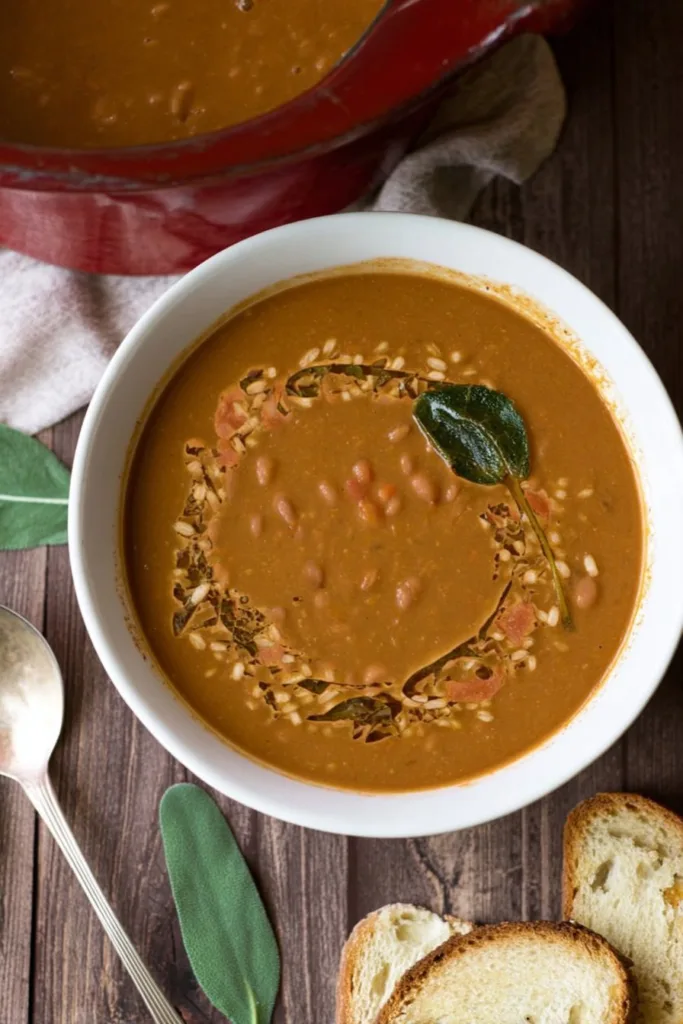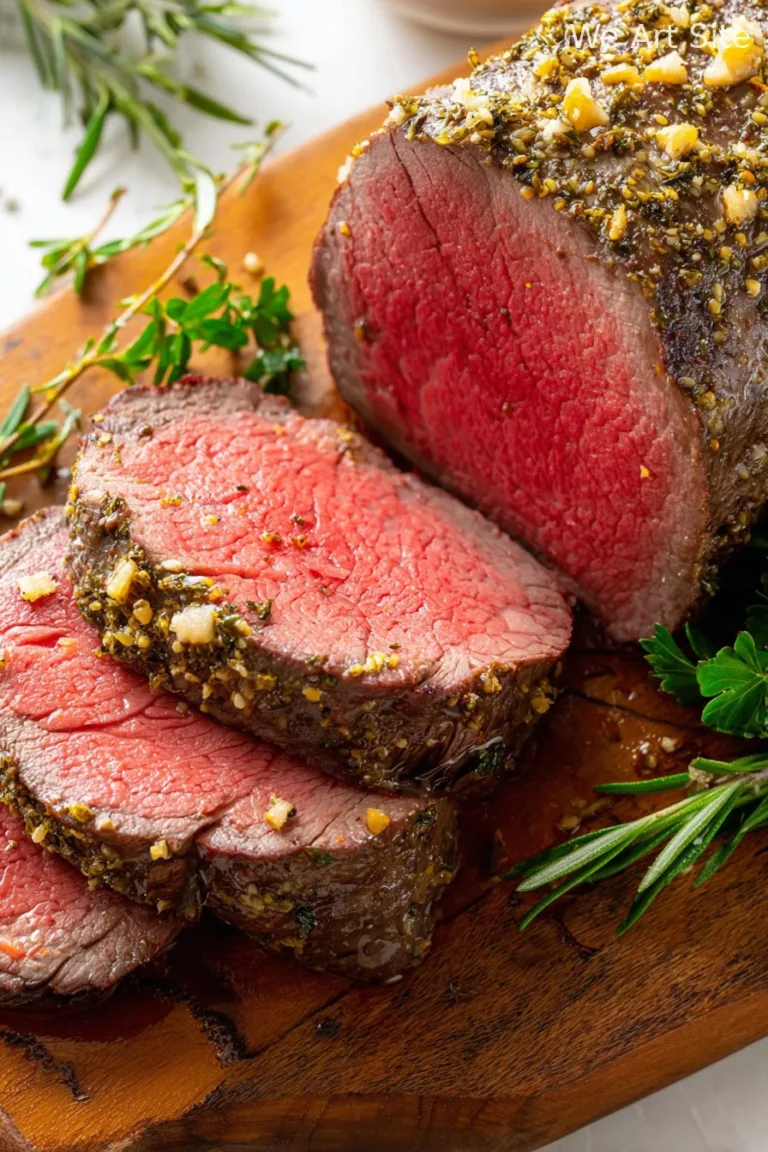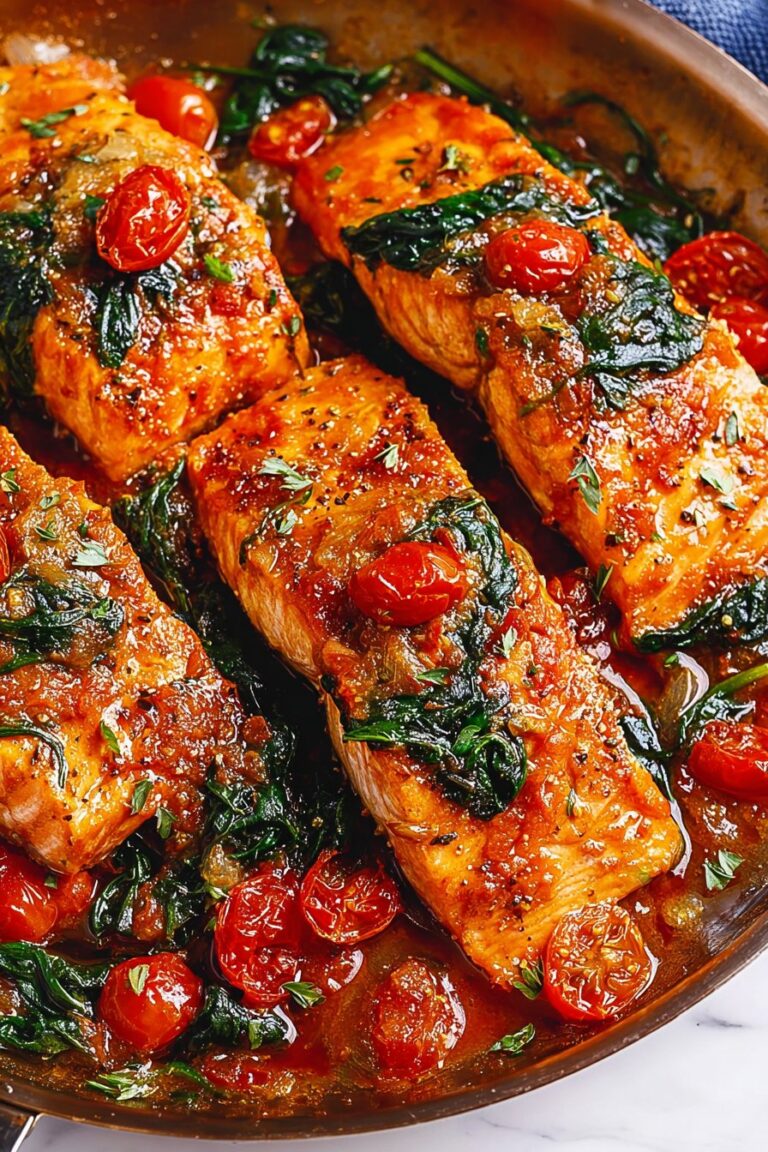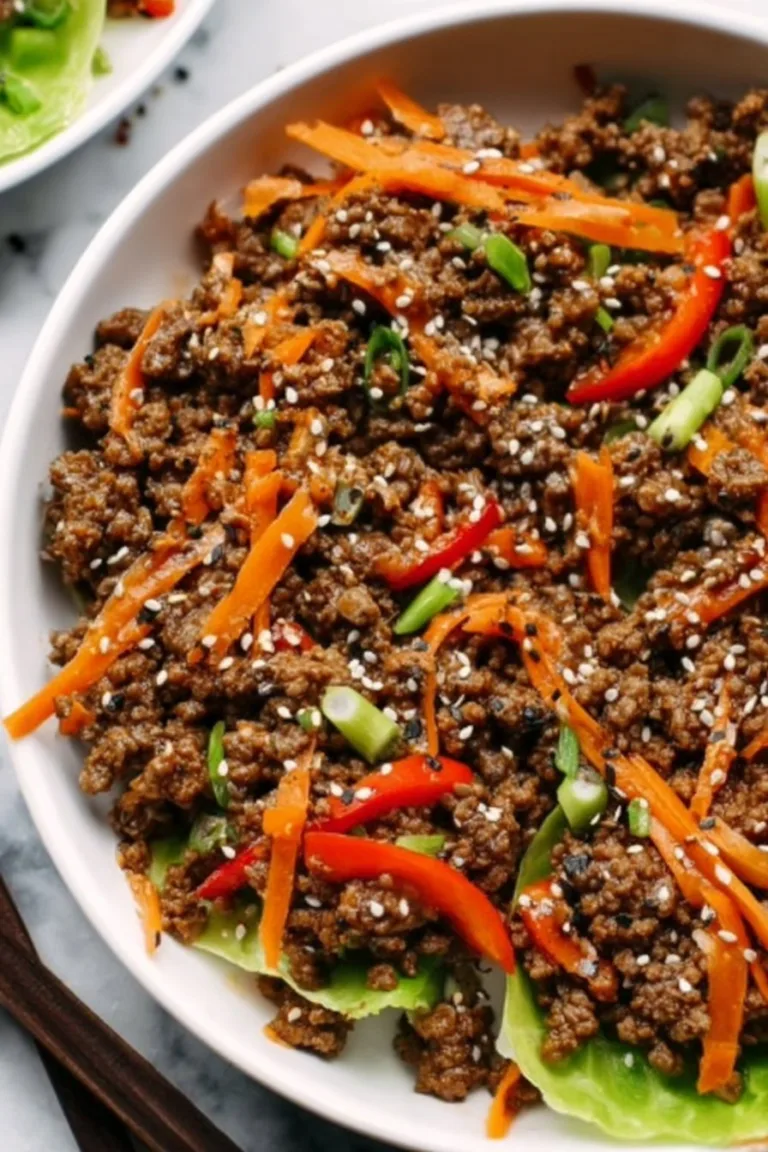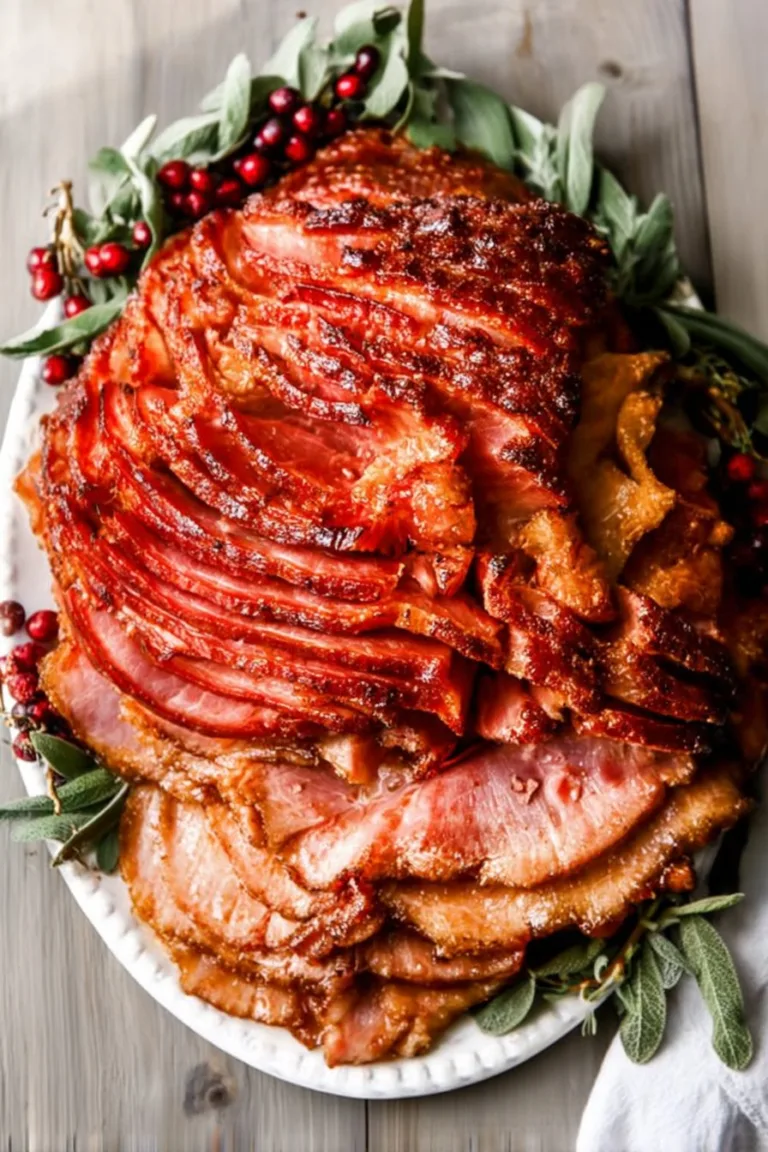If you ever wander into my kitchen on a rainy Tuesday, there is a very good chance you will find a big pot of something gently blipping on the stove, and if the luck is with us it will be this Tuscan Borlotti Bean Soup with Farro. I first made a version of it after a trip to Tuscany where a nonna scolded me for skimping on olive oil, then handed me a hunk of bread and said to wait because soup needs its soak time. I laughed, nodded, and then immediately ate before it cooled because patience has never been my strongest suit. Anyway, this one has become a bit of a staple, the sort of soup that tastes like a hug you can actually eat.
Why this bowl shows up in my kitchen
I make this when the week feels long and I want dinner that is kind to me, not demanding. My family goes a bit wild for it because it is hearty without being heavy, and the farro makes it feel like a proper meal. And yes, there is a tiny bit of chopping, but once the pot is going you mostly let it do it’s thing while you tidy the counter or, in my case, overwater the basil plant again. I used to be annoyed that beans take time, then I figured out a rhythm. Soak if you can, canned if you cannot, no worries. Also, a pinch of chili wakes it up in a way I did not expect at first.
What you will need, with wiggle room
- 2 cups dried borlotti beans, soaked overnight, drained and rinsed (or 2 cans, about 400 g each, drained and rinsed). If I am in a hurry I use canned, and it is totally fine.
- 1 cup farro, about 180 g. Pearled cooks quicker; semi pearled has more bite. Barley works in a pinch, and brown rice if that is what you have.
- Extra virgin olive oil, about 3 tablespoons. My grandmother always insisted on the good stuff, but honestly any decent olive oil works fine.
- 1 medium onion, chopped small.
- 2 carrots, chopped.
- 2 celery stalks, chopped.
- 3 garlic cloves, sliced thin.
- 2 tablespoons tomato paste. A splash of passata instead if that is what you have open.
- 1 Parmesan rind, optional but lovely if you have one lurking form the fridge.
- 1 sprig rosemary and a few sage leaves, plus 1 bay leaf. Dried works if fresh is nowhere to be found.
- About 1 litre vegetable or chicken stock, plus extra water as needed. I sometimes add water instead of more stock if it is tasting too salty.
- Pinch of chili flakes, more if you fancy a kick.
- Salt and black pepper.
- 2 cups chopped kale or cavolo nero. Spinach is fine, it just wilts faster.
- Zest of half a lemon, optional but bright.
- Pecorino or Parmesan for serving.
If you want a little homework reading, I like this gentle primer on soffritto because it explains the spirit of it without being fussy: how to build a good soffritto. And if farro is new to you, this walkthrough is helpful: how to cook farro.
How I actually cook it, step by step
- Beans first. If using dried, soak overnight, then simmer in fresh water until tender, about 45 to 60 minutes depending on the beans. Do not salt yet. If using canned, skip ahead and give yourself a gold star.
- Warm a big heavy pot over medium heat. Add the olive oil, then the onion, carrot, and celery with a pinch of salt. Cook slowly until glossy and sweet, about 8 to 10 minutes. This is the quiet bit where I usually sneak a taste and tell myself it is for science.
- Stir in the garlic and tomato paste. Cook a minute until the paste darkens a shade and smells almost caramelized. If it sticks, a splash of water saves the day.
- Add the farro and toast it in the pot for a minute so it wakes up, you will hear it soft crackle.
- Tumble in the cooked beans or the canned beans, then pour in the stock. Add the rosemary, sage, bay leaf, chili, and the Parmesan rind if using. Bring to a gentle simmer.
- Let it simmer until the farro is tender. Pearled farro takes around 20 to 25 minutes, semi pearled more like 30 to 35. Stir now and then so nothing naps on the bottom. Do not worry if it looks a bit thick then thin then thick again, it always does.
- Creme it up a little. Scoop out a cup of the soup with plenty of beans and blitz with an immersion blender, then pour back in. Actually, I find it works better if you blitz just the beans and liquid, not the herbs. No immersion blender. Mash with a ladle or a potato masher, works a charm.
- Stir in the chopped greens for the last 5 minutes. They should soften and turn silky but still be vibrant.
- Fish out the herb stems and rind. Taste, then salt and pepper until it tastes like a good memory. Add lemon zest if you like it bright.
- Turn off the heat and let it sit 5 minutes. Soups need a minute to think about their life choices.
Little notes I learned the hard way
- Salt beans after they are tender or they can take ages. I kept forgetting and wondered why they were stubborn. It was me, hi.
- If your farro is very old, it can need more time. Add a splash more water and keep going. No biggie.
- Acid can keep beans firm, so add lemon zest at the end. Tomato paste is fine early, it is not very acidic in this small amount.
- I think this tastes even better the next day, but if you add the greens fresh on day two, they keep some bounce.
- Freezing is fine, though greens can get murky. I freeze the base without greens and add a handful when reheating.
Variations I have tried
- Smoky start: cook a few diced pancetta bits with the soffritto until crisp, then proceed. It adds a cozy depth.
- Tomato forward: add a small can of crushed tomatoes and a pinch of sugar to balance. Hearty and a touch rustic.
- Herb swap: thyme instead of sage makes it very fragrant, different but lovely.
- Lemony light: finish with lots of zest and a squeeze of juice, plus extra parsley. Spring in a bowl.
- The one that did not work: coconut milk. I tried it once and the flavors argued, not a happy marriage.
If you are the curious type about beans in general, I have learned a lot from this clear guide: bean cooking basics.
Gear that helps
A heavy pot with a lid is pretty essential here because it holds steady heat. A wooden spoon, a ladle, and an immersion blender make life easy. On second thought, if you do not have an immersion blender, a potato masher or even the back of a mug does the job. I said essential, but we both know we can improvise when the craving hits.

Storing and reheating without fuss
Cool leftovers and stash in the fridge for up to 4 days. It thickens as it sits, so loosen with water or stock when reheating. It freezes well for 2 to 3 months, especially if you freeze without the greens and add fresh ones when warming. Though honestly, in my house it never lasts more than a day.
How we like to serve it
Big bowls, drizzle of good olive oil, plenty of black pepper, and a snow of Pecorino. We rub garlic on thick toast and dunk, a little family tradition that started by accident. If I have rosemary oil, I do a cheeky swirl on top and everyone thinks I have been fancy.
Pro tips learned the slightly painful way
- I once tried rushing the soffritto and regretted it because the sweetness never showed up. Take the time there, it pays you back.
- I over salted before reducing once, and had to add water and a potato to fix it. Taste later rather than early.
- Farro can stick if the heat is high. Gentle simmer is your friend; vigorous boiling is not.
- Do not skip the rest at the end. Five minutes with the lid on lets everything settle into itself.
FAQ you have asked me
Can I use canned beans only
Absolutely. Rinse them well and reduce the simmer time since they are already tender.
What if I need it gluten free
Swap farro for brown rice or quinoa. You will need to watch the liquid a bit more, but it works.
How long does farro take
Pearled farro is usually done around 25 minutes, semi pearled often needs 30 to 35. Taste a grain. If it is pleasantly chewy, you are there.
Can I make this in a pressure cooker
Yes, but the texture can shift. I tend to cook dried beans in the cooker first, then build the soup on the stove so I can control the farro.
Is chicken stock better than vegetable
Better is a stretch. Different, yes. Vegetable keeps it lighter; chicken is a bit richer. I like both.
Why were my beans tough
Old beans are stubborn, hard water can be tricky, and salt too early can slow things down. Try longer cooking or a pinch of baking soda next time.
Can I add meat
Sausage is nice. Brown it first, scoop it out, then continue with the vegetables and add the sausage back at the end.
What bread do you serve with it
Whatever is around. Ideally a crusty loaf, but even a toasted slice with olive oil does the job, mate.
And if you are still reading, you are my kind of person. Make the soup, take a photo, then eat it warm, then warm again later because somehow it gets better, then tell me if you changed anything because I love hearing what smart tweaks people come up with.

